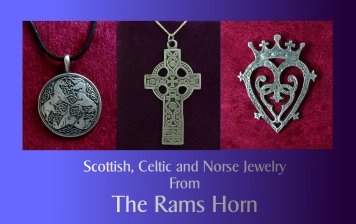
Amazing Grace
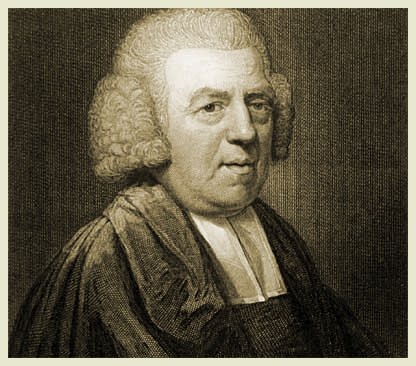
John Newton
1725-1807
John Newton and the lyrics to Amazing Grace
Faith's Review and Expectations
|
|
|
John Newton is the author of the lyrics to Amazing Grace. The name he gave this hymn was " Faith's Review and Expectations" we have come to know it as Amazing Grace which is the first line of the hymn.
Newton was born in 1725 in Wapping, London, England. Despite the powerful message of "Amazing Grace," Newton's religious beliefs initially lacked conviction; his youth was marked by religious confusion and a lack of moral self-control and discipline.
After a brief time in the Royal Navy, Newton began his career in slave trading. The turning point in Newton's spiritual life was a violent storm that occurred one night while at sea. Moments after he left the deck, the crewman who had taken his place was swept overboard. Although he manned the vessel for the remainder of the tempest, he later commented that, throughout the tumult, he realized his helplessness and concluded that only the grace of God could save him. Prodded by what he had read in Thomas à Kempis' Imitation of Christ, Newton took the first step toward accepting faith.
These incidents and his 1750 marriage to Mary Catlett changed Newton significantly. On his slave voyages, he encouraged the sailors under his charge to pray. He also began to ensure that every member of his crew treated their human cargo with gentleness and concern. Nevertheless, it would be another 40 years until Newton openly challenged the trafficking of slaves.
Some three years after his marriage, Newton suffered a stroke that prevented him from returning to sea; in time, he interpreted this as another step in his spiritual voyage. He assumed a post in the Customs Office in the port of Liverpool and began to explore Christianity more fully. As Newton attempted to experience all the various expressions of Christianity, it became clear that he was being called to the ministry. Since Newton lacked a university degree, he could not be ordained through normal channels. However, the landlord of the parish at Olney was so impressed with the letters Newton had written about his conversion that he offered the church to Newton; he was ordained in June 1764.
In Olney, the new curate met the poet William Cowper, also a newly-born Christian. Their friendship led to a spiritual collaboration that completed the inspiration for "Amazing Grace," the poem Newton most likely wrote in Kineton, Warwickshire around Christmas 1772.The lyrics are based on his reflections on an Old Testament text he was preparing to preach on, adding his perspective about his own conversion while on his slave ship, the Greyhound, in 1748.
Newton's lyrics have become a favourite for Christians, largely because the hymn vividly and briefly sums up the doctrine of divine grace. The lyrics are based on 1 Chronicles 17:16-17, a prayer of King David in which he marvels at God's choosing him and his house. Newton apparently wrote this for use in a sermon he preached on this passage on New Year's Day 1773, and for which he left his sermon notes, which correspond to the flow of the lyrics.
(He entitled the piece "Faith's review and expectation.")
The song has also become known as a favorite with supporters of freedom and human rights, both Christian and non-Christian, in part because many assume it to be Newton's testimony about his slave trading past.
Extra verses
In her novel Uncle Tom's Cabin, Harriet Beecher Stowe quoted three stanzas as seemingly from one hymn, two of them corrupt versions of Amazing Grace stanzas, and one reading:
When we’ve been there ten thousand years,
Bright shining like the sun,
We've no less days to sing God’s praise
Than when we first begun.
Despite its relatively poor mesh with the rest of the hymn (the change from "I" to "we," change of subject, no reference for "there"), a form of this stanza became common as part of Amazing Grace in hymnals in the early twentieth century, due in large part to the influential hymnodist and publisher Edwin Othello Excell. While the stanza is often credited to John P. Rees (1828-1900), it antedates his birth. It was in print by 1790, added to an old and widely-varied hymn most usually beginning "Jerusalem, my happy home", and was still appearing as part of this hymn in books published around the time of Stowe's book.
Cherokee lyrics
While on the "Trail of Tears," the Cherokee were not always able to give their dead a full burial. Instead, they sang a translation (or rather, paraphrase) previously made by Samuel Worcester. For this reason, many contemporary Native American musicians have recorded the song.
Music
*As with other hymns of this period, the words were sung to a number of tunes before and after they first became linked to the now familiar variant of the tune "New Britain" of which the composer is unknown and which is in William Walker's shape-note tunebook Southern Harmony, 1835.
Shape Note version from 1835.
"New Britain" first appears in a shape note hymnal from 1829 called Columbian Harmony. The melody is believed to be Scottish or Irish in origin; it is pentatonic and suggests a bagpipe tune; the hymn is frequently performed on bagpipes and has become associated with that instrument. This tune seems to have been firmly established as the 'standard' for this hymn after an arrangement of it appeared in a series of popular hymnbooks in the early twentieth century.
Another tune to which it has sometimes been sung is the so-called "Old Regular Baptist" tune. It was sung by the Congregation of the Little Zion Church, Jeff, Kentucky, on the album The Ritchie Family of Kentucky on the Folkways label (1958).
The Blind Boys of Alabama have also helped to popularise a long-standing association to the tune House of the Rising Sun.

Bagpipes
The association with Highland bagpipes is relatively modern; for over a century, the tune was nearly forgotten in the British Isles until the folk revival of the 1960s began carrying traditional musicians back and forth between the British Isles and the United States (where "Amazing Grace" had remained a very popular hymn). It was little known outside church congregations or folk festivals until Arthur Penn's film Alice's Restaurant (1969), in which Lee Hays of The Weavers leads worshipers in singing "Amazing Grace."[citation needed]
In the film Star Trek II: The Wrath of Khan Mr. Scott plays 'Amazing Grace' on the bagpipes during the funeral of Mr. Spock.
The Boston Irish punk band the Dropkick Murphys released a bagpipe version of 'Amazing Grace' on their 1999 album "The Gang's All Here".
Performances and recordings
Owing to its ability to be adapted easily, the song is a popular recording choice. In essence, it has a very basic tune. Singers can then very easily add melismatic phrases, and alter the melody to make it match their own style/genre of singing. It has been recorded by many artists over the last century; Allmusic lists over 1800 recordings.
"Amazing Grace" was not recorded until 1922, reflecting the penchant of record companies to record marches, standard popular tunes, classical music, and comedic songs and sketches in the years before World War I. By the 1920s, however, many in the recording industry became convinced that traditional music could be profitably marketed to immigrant groups, African-American communities, and white rural southerners. The commercially recorded versions of "Amazing Grace" fit neatly into what the companies at the time termed either their "race" catalogs, or their "hillbilly" and "old-time" catalogs. As performed by the Original Sacred Harp Choir, 1922
The first company to record "Amazing Grace" was Brunswick Records which in 1922 released a small series of recordings of Sacred Harp songs. Brunswick created a special label for this series that incorporated shape-note notation in its design. Other recordings in the Sacred Harp tradition include J. T. Allison's Sacred Harp Singers, Denson-Parris Sacred Harp Singers, and Dye's Sacred Harp Singers.
Several early recordings of "Amazing Grace" feature African-American "singing preachers," the most popular of whom was Reverend J. M. Gates.Gates viewed the song as "one of the good old familiar hymns" that would help his listeners return to the traditional religious values of the past Gates' first recording for Columbia proved quite popular--dealers ordered 3,400 advanced copies and requested more than ten times that number for his second release.
Owing largely to the popularity of Gates' recordings, dozens of other black preachers made recordings of religious songs and sermons.Other black preachers who recorded "Amazing Grace" included J. C. Burnett (with a more fiery delivery than Gates'), Reverend M. L. Thrasher, and Reverend H. R. Tomlin. These performances usually were preceded by a short statement on the religious significance of the song. As well, the performances often included the practice of lining out the song, a traditional method of delivery in both the African- and Anglo-American religious traditions in which the preacher spoke a line of the song and the congregation sang it back.
At the same time that commercial companies were recording "Amazing Grace" with an eye toward profit, folklorists were documenting the song for scholarly purposes. From its inception in 1928 the Library of Congress' Archive of American Folk-Song sent collectors into the field first with wax cylinder recorders, then instantaneous disc recorders. Though somewhat limited in fidelity compared to the equipment used by the commercial companies, these recorders had the advantage of being portable. As such, field recordings could capture a performance in its intended physical and cultural context and often were accompanied by interviews documented on the recording or through field notes. Collectors such as the Lomax Family (John A., Alan, and Ruby T.), Herbert Halpert, Sydney Robertson, and John Henry Faulk made recordings that demonstrate the wide diffusion of "Amazing Grace" through many different communities.
Judy Collins - 1970-1972. UK Singles Chart: 67 weeks, a record for a female artist; peaked at number five.
Crystal Gayle for the album "Someday_(Crystal_Gayle_album)" (1995).
Kylie Minogue performed the song on her VHS release "Kylie: Live in Dublin" (1991).
Pipes and Drums and Military Band of the Royal Scots Dragoon Guards - 1972 instrumental version. UK Singles Chart: five weeks at number one; also top spot in Australia.
Aretha Franklin - 1972 gospel album Amazing Grace
Joan Baez - 1985. Opened the U.S. portion of Live Aid with "Amazing Grace"
Hayley Westenra 2003 album Pure. A version arranged and produced by Sir George Martin was one of the most popular songs on the successful album, and a single of this version of Amazing Grace released in Japan went to the top of the Japanese international chart and was used as the theme song of a Japanese TV program. Minako Honda also recorded a version that went to the top of the Japanese charts, and in a later album featuring mainly Japanese pop songs, Westenra included a duet of the song with Honda, which was also released as a single and reached the top of the Japanese international charts.
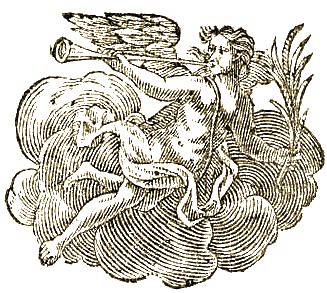
References
^ a b c d e f "The Creation of 'Amazing Grace'". Performing Arts Encyclopedia. Library of Congress. This article incorporates text from this source, which (as a US government publication) is in the public domain.
^ The John Newton Project has posted online the sermon notes that Newton wrote to go along with the hymn: "Amazing Grace: The Sermon Notes". Transcribed from Princeton University Library, John Newton Diary, CO199 © Marylynn Rouse (2000) website url: http://www.johnnewton.org/Group/Group.aspx?id=32665 (Accessed April 10, 2007)
^ Harriet Beecher Stowe, Uncle Tom's Cabin Ch. XXXVIII (1853)
^ Catholic Book of Worship III. Canadian Conference of Catholic Bishops, Ottawa, Canada, (1986)
^ Richard and Andrew Broadus (or Broaddus), A Collection of Sacred Ballads (Virginia, 1790)
^ John Putnam, Conference Melodies, or Songs of Zion (New York, Edward H. Fletcher, 1853), "Jerusalem my happy Home"
^ Duvall, Deborah (2000). Tahlequah and the Cherokee Nation. Arcadia Publishing. ISBN 0738507822.
^ Walela - Walela Lyrics & Translations
^ Mark Rhoads maintains a brief review of the early melodies at his website, Amazing Grace: Some Early Tunes, which can be found at the url: http://www.markrhoads.com/amazingsite/index.htm (accessed April 10, 2007)
^ Rhoads, Mark. "Amazing Grace: Some Early Tunes". Retrieved on 2008-02-23.
^ Allmusic search (allmusic.com), accessed 21 August 2007 (this site is not linkable.
^ a b c d e f g h i j k l m n o p "Sound Recordings of 'Amazing Grace' in the LC Collections". Encyclopedia of the Arts. Library of Congress. This article incorporates text from this source, which (as a US government publication) is in the public domain.
^ "Chart stats - Judy Collins - Amazing Grace". Retrieved on 2008-03-01.
^ "Chart stats - Pipes And Drums And The Military Band Of The Royal Scots Dragoon Guard - Amazing Grace". Retrieved on 2008-03-07.
^Amazing Grace: The Story of John Newton By Al Rogers http://www.texasfasola.org/biographies/johnnewton
^Wikipedia Entry: http://en.wikipedia.org/wiki/Amazing_Grace
^Word Press Piece: http://humblepursuits.wordpress.com/2008/04/29/the-amazement-of-grace-and-the-life-of-john-newton/

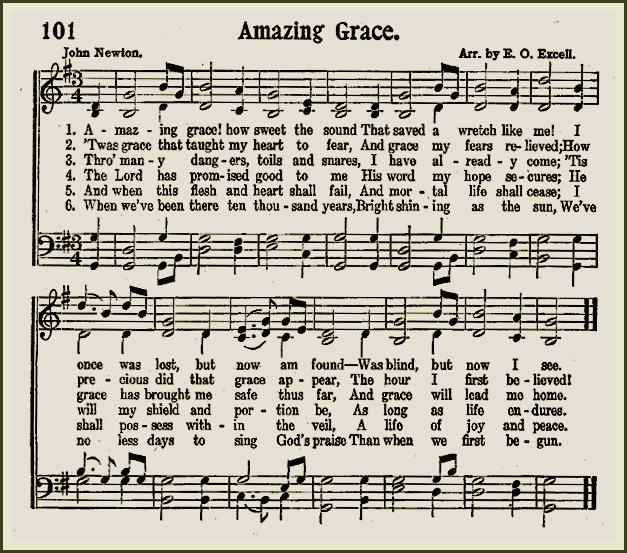

Films
A number of films and documentaries have been made about John Newton and Amazing Grace. Here is a video of the BBC documentary and links to some other films. Net Flicks has some of these should you want to rent them I noticed.
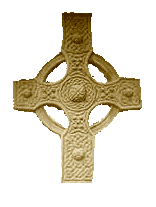
More about John Newton
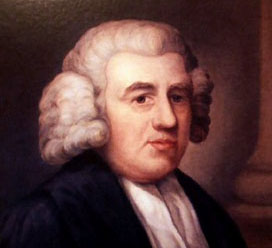
The hymn was quite popular on both sides in the American Civil War.
On his epitaph, John Newton’s self scribed text shines with the grace of God:
JOHN NEWTON
Clerk,
Once an Infidel and Libertine,
A Servant of Slaves in Africa,
Was,
by the rich mercy of our Lord and Savior
JESUS CHRIST,
Preserved, restored, pardoned,
And appointed to preach the Faith
He had long laboured to destroy,
Near 16 years at Olney in Bucks;
And years in this church.

copyright 2009 , Jim & Beth Boyle, All Rights Reserved
No part of this website may be used for any purpose ( including using images )
without written consent from The Rams Horn
